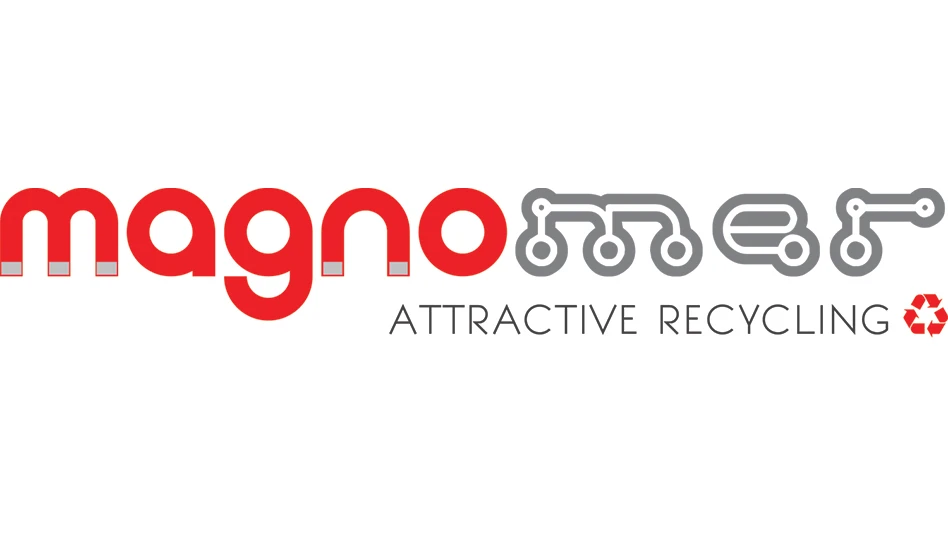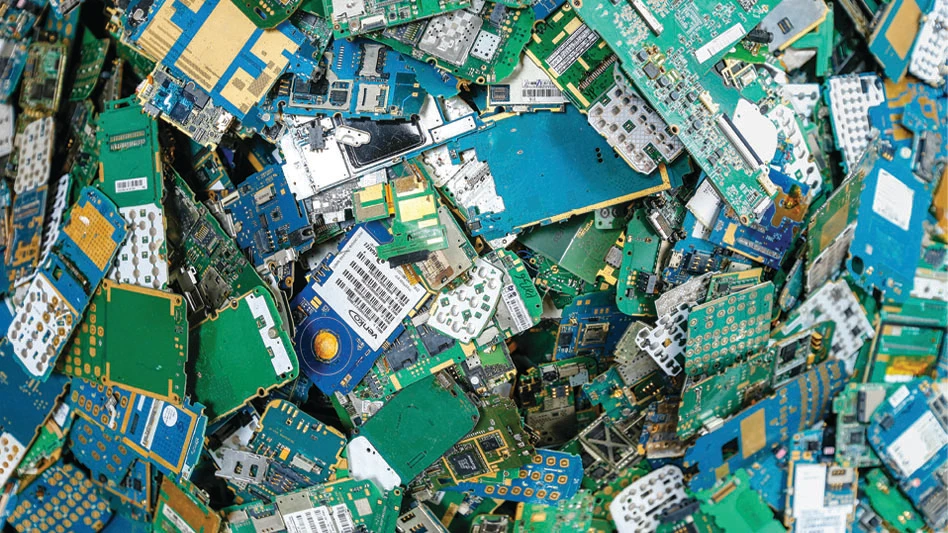New mills designed specifically to serve the region - combined with improved commodity markets nationwide - create a promising outlook for recycling in the Southwest states.
Progressive, independent and self-sufficient are just some of the words and phrases that inhabitants of the Southwest states use to refer to themselves and their lifestyle. In addition, the climate of the Southwest naturally draws attention to the outdoors, bringing environmental issues to the forefront of every aspect of Southwestern culture, including industry.
Combine this sense of independence and environmental awareness with new manufacturing mills and other industrial facilities — at least planned if not already operational — in the region designed specifically to use post-consumer and post-industrial materials, and the logical outcome is a healthy recycling industry.
As Nancy Larson, executive director of the Lakewood-based Colorado Recycles, succinctly puts it, "it’s a good time to be a processor."
MARKETS.
Regardless of any underlying sense of independence in the Southwest, the recovery in the national economy in the past 12 months has certainly not been a hindrance, either. In many ways, market dynamics in the Southwest are merely a reflection of market dynamics nationally, according to Gary Olson, executive director of Southwest Public Recycling Association."Demand is up, so prices are up," he explains. "It really comes down to that. That seems to be the case for every commodity across the board."
Increased activity in the construction sector, a major consumer of steel and other metals, has kept scrap metal prices buoyant through most of 1994.
"Pueblo has had its strongest surge in home building permits that it’s had since the 1970s," says Michael Stillman, vice president of National Material Trading Division, Pueblo, Colo. "So that’s a very strong industry. And of course Las Vegas leads the nation in new home starts."
Despite a railcar shortage that has been more of a nuisance than a significant impediment, scrap markets were still very strong in the last weeks of 1994, according to Stillman.
"For the month of December, the Colorado-New Mexico-Kansas area is generally up two to three dollars," he says. "In the Utah area it’s basically unchanged. We anticipate continued strong markets well into the first quarter of 1995. There are no large inventories in the dealers’ hands, although most of the mills have good inventories, but continue to buy their melt."
In addition to metals, paper markets made a strong showing in 1994, especially after a lackluster year previously, notes Vern Christensen, president of Nevada Recycling Corp., North Las Vegas.
"Last year (the paper market) was nothing," he says. "This year it was great. I guess that’s the result of demand, as well as an increased pressure from many directions to recycle. It may be a lack of forest product, but there is a lot of paper being recycled."
He notes that cardboard and old newspaper markets are strong, the latter due to an increase in demand for insulation installed into newly built homes. "With demand for insulation high, that keeps paper short, which is good."
Plastics, a material whose future in recycling was at best uncertain as recently as 12 months ago, is faring well in the Southwest. Olson notes high demand and strong prices for high-density polyethylene. "Polyethylene terephthalate is also at an all-time high," he adds. At the beginning of December, processors were paying as much as 44 cents per pound of recycled HDPE, according to prices compiled by Plastics News. Recycled PET, meanwhile, was bringing in as much as 57 cents per pound.
While recycling in general is considered an entrepreneurial industry, plastics recycling is perhaps the area where this perception is most appropriate, according to Olson. SPRA has recently signed two-year contracts with Wellman, Orion Pacific, Polysource and Envirothene as part of the assoc-iation’s cooperative marketing program in plastics.
"We’re finding that entrepreneurs are coming forward with a number of projects to do small-scale plastic extrusion manufacturing," says Olson. "A new one is coming up in Albuquerque. There’s been talk of one in the Phoenix area. There is one coming together in Colorado. My guess is that if somebody can come forward with the money and the markets for end-use products, you’re going to see more and more of these smaller scale manufacturers. It doesn’t cost that much to get something going."
Even glass, a generally static commodity, is showing healthy movement in the Southwest, says Olson. "Actually the demand for glass out here is increasing. Price-wise, it’s creeping up a little bit. But more so demand-wise," he says, noting increased demand due to expansion by Coors and CRInc.
Overall, Olson has witnessed improvements in end markets for virtually all recyclable commodities. "It’s a combination of the economy getting better, but also decisions to expand that were made over the last two years," he says. "Also, new facilities have come on line, or will be coming on line, like North Star Steel. These were all decisions made when the economy wasn’t doing very well, so that they’d perhaps be poised when the economy does come back."
NEW PROJECTS.
Perhaps the most significant — and promising — development for the recycling industry is the is the groundbreaking last fall for the proposed North Star Steel Co. minimill in Kingman, Ariz.Scheduled for completion by the end of 1995, the mill is designed to produce as much as 500,000 tons of new steel wire rods, reinforcement bars and plain rounds for the construction industry. Scrap from the Southwest region that is currently directed to export markets will eventually feed the North Star mill, according to Greg Lauser, spokesman for North Star.
"Raw materials for the Arizona mill are available in plentiful supply," according to Robert Garvey, president of North Star Steel. "There is a scrap surplus in the area. We are going to absorb a portion of the millions of tons of scrap currently being exported to Asian nations."
Speaking at the Western States Steel Forum sponsored by American Metal Market last month, Garvey noted that total shipments of ferrous scrap from the U.S. to Asian countries during the first seven months of 1994 were more than 2.5 million tons.
"Rather than export the energy coefficient within that scrap metal to Asia, our Arizona mill will help retain some of that energy and 155 steelmaking jobs in this country," said Garvey.
Scrap availability for the mill is not expected to be a problem, Garvey added, "because it comes from the very area in which our new steel will be needed. That surplus will lend itself to more precise planning of just-in-time steel availability and deliveries than in the Midwest or other regions with less scrap availability. Within 24 to 48 hours we want to convert scrap into new steel and have minimal steel inventory at the mill. We want it moving — either in scrap or finished form — as soon as possible."
In addition to the North Star minimill startup, CF&I Steel has launched a steel can recycling program at their mill in Pueblo. Cans collected primarily from curbside and dropoff programs, are remelted and made into baling wire railroad rails, nails and staples. At presstime, cans were feeding the mill on a pilot basis, but early projections by CF&I target a consumption rate of up to 500 tons of cans monthly.
Once the pilot phase of the program is complete, CF&I is expected to pull cans from recycling programs in Colorado, New Mexico, Utah and Arizona, according to Larson at Colorado Recycles.
STATE PROGRAMS.
Although there may be new projects coming on line, there is room for more, according to Greg Fisher, recycling market development coordinator for the Arizona Department of Commerce. In conjunction with the Arizona Department of Environmental Quality, Fisher is developing a state-wide recycling market development study to identify:•present and future supply and demand trends for Arizona’s recovered materials by commodity,
•potential new markets for Arizona recovered materials, especially among firms which could process and manufacture finished goods in Arizona, and
•possible new mechanisms such as tax legislation and/or financing programs to boost Arizona’s demand and value-added production of targeted recoverables.
Some of these tools are already being used to promote recycling in Arizona. An attractive tax incentive played a major role in securing the North Star minimill in Kingman, says Fisher. Another company being considered for a tax incentive is Stone Container, which plans to convert to a 100-percent recycled feedstock for the corrugated production line in Snowflake, Ariz.
"Obviously, the shortage of groundwood is causing some problems among the producers who depend on that source," says Fisher. "Arizona’s timber industry is hurting, just like Oregon’s and everybody else’s. Stone is seeing it in their strategic interests to convert, along with the national trends for paper."
Fisher expects the market development study to eventually give the Department of Commerce and the Department of Environmental Quality "a better picture of the companies that we want to target. We’re looking out at the marketplace for companies that may be a little bit smaller, not as well established, etc. Right now I’m looking at least a dozen companies that fall within the realm of recycling and environmental technology."
SELF-CONTAINED?
Many recyclers in the Southwest suggest that the recycling market in their part of the country is merely a reflection of the overall U.S. economy."We’re affected by a lot of the same factors," says Stillman. "There’s weather, railcar availability, flow of scrap in and out of the yard, mill demand, to name a few. I guess the only thing that’s really different out here is that there are fewer mills, and if one consumer makes an unusually big buy or unusually small buy, that can affect the market more out here than one mill in, say, Chicago."
Larson, however, suggests that the recycling economics of the Southwest are subject to their own self-contained dynamics. While economic improvement nationwide has certainly helped the Southwest, she says, the region runs counter to national cycles in many respects.
"In the mid-eighties, when the east coast was really going very strong, we were in a very deep recession out here," she recalls. "And we were coming back as the rest of the nation went down. So we’re kind of counter-cyclical. We’ve been doing very well."
OUTLOOK.
The year ahead looks equally promising, she says. "We’re seeing continued stable and growing markets. I think there’s certainly going to be some fluctuation, because the markets have been so hot, so there’s definitely going to be a little bit of fallout there. It’s like anything else — you just can’t keep going at 110 percent all the time."On the scrap metal side, Heirshberg, president of Desert Metals Recycling, Tucson, Ariz., holds fast to the popular position of "cautious optimism," depending largely on the economic strategy assumed by the federal government.
"The political climate might be pretty active," he says. "If the interest rates are held down and people are getting jobs and they want to buy things, it will remain level."
With increased attention — favorable or otherwise — focused on the North American Free Trade Agreement, international dynamics will have an even greater impact on the future of recycling, especially in a part of the country so close to the Mexican border.
"There’s a fair amount of recycled material moving from all the border states into Mexico to end-use markets there," says Olson. "The feeling is that with environmental regulations being enforced more and more in Mexico, the need for collection of recyclables in Mexico is going to occur. So we’ll see not just the flow of materials into Mexico, but the collection and processing of recyclables in Mexico."
In Arizona, Fisher says the Department of Commerce and the Department of Environmental Quality will step up their combined lobbying efforts in the next session of the state legislature — scheduled to convene in January 1996. Targeted legislation will depend on the findings of their joint market development study, he says.
"We are a people that does not generally take kindly to mandated legislation," he says. "We are more the market-driven culture. So the way we intend to approach recycling market development is through highlighting the market opportunity side, rather than the stick approach. We’re trying to focus more on the carrot. That seems to work very well in the West, where you have a very independent group of people."
Larson suggests that recycling has earned a great deal of credibility in the past decade or two, says Larson, whose admits that her father would not admit 11 years ago that his college-educated daughter had chosen a career in the recycling business.
"But now it’s okay," she says, referring not only to her father’s acceptance of recycling but to the acceptance by an entire culture. "Even the people that have joined the industry in the last four or five years are really beginning to think of themselves as suppliers of raw materials to the manufacturing industry, and not just as recyclers. I think that’s an important shift, in that we realize that we are part of the paper industry. We are part of the steel industry. We are part of the aluminum industry, and we are raw material suppliers."

Explore the January 1995 Issue
Check out more from this issue and find your next story to read.
Latest from Recycling Today
- Haber raises $44M to expand to North America
- Canada Plastics Pact releases 2023-24 Impact Report
- Reconomy brands receive platinum ratings from EcoVadis
- Sortera Technologies ‘owning and operating’ aluminum sorting solutions
- IDTechEx sees electric-powered construction equipment growth
- Global steel output recedes in November
- Fitch Ratings sees reasons for steel optimism in 2025
- P+PB adds new board members





